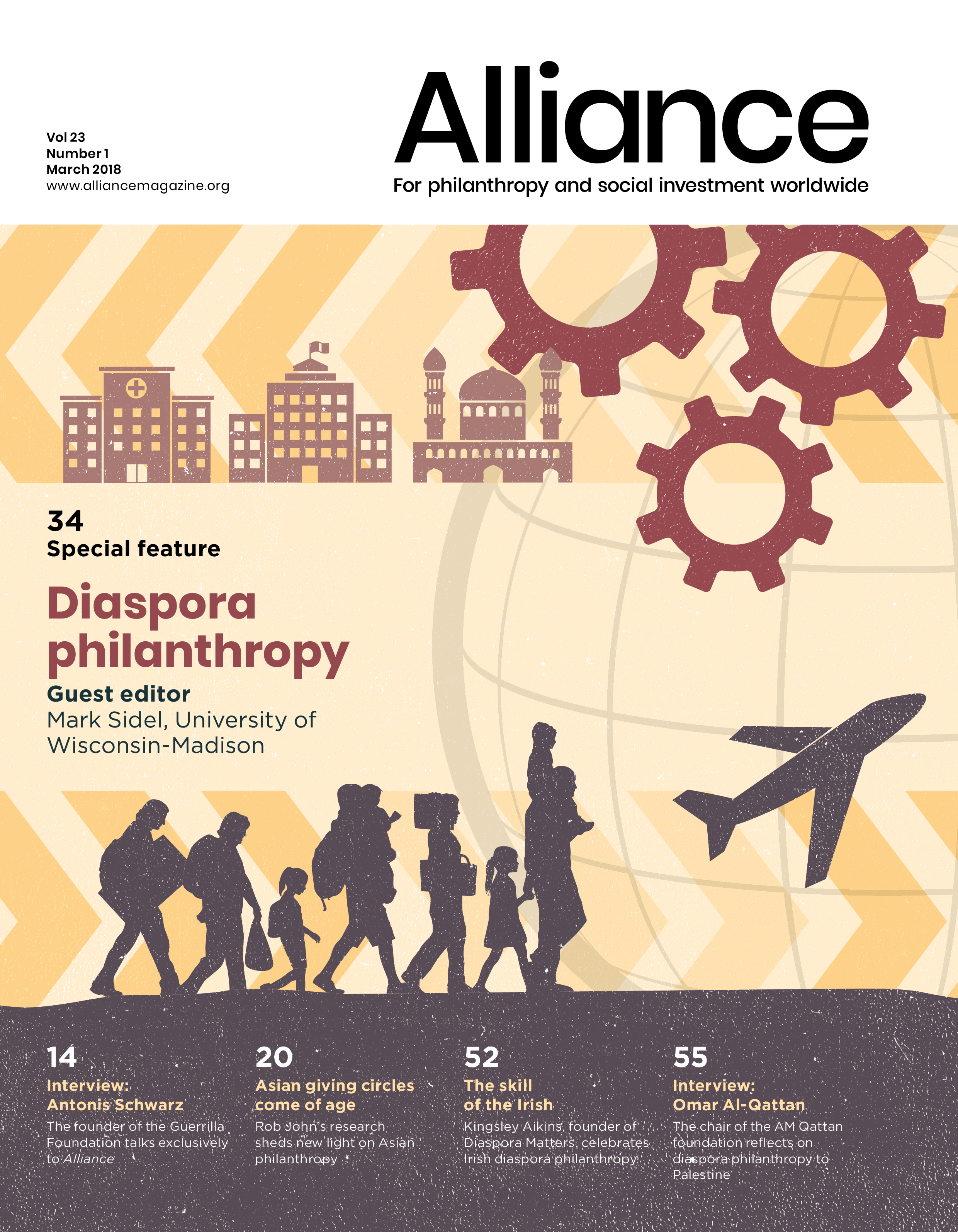In this issue of Alliance, authors from a number of nations and regions give a new take on the theme of diaspora philanthropy.
They explore younger diaspora communities and the new technologies and values which imbue their giving; the political and economic bases of diaspora giving; government policies which encourage the diaspora to give back, and try to channel where they give; and other key themes.
The growing diversity and complexity of diaspora giving shines through these contributions.
Research on diaspora philanthropy has its modern roots in the mid-1990s.
Some of the themes explored in these articles echo early diaspora giving research, and unresolved gaps or unresolved problems remain some two decades later.
In the mid-1990s, the first generation of diaspora giving researchers lamented the lack of good data on diaspora philanthropy.
Today Rajesh Tandon and other authors writing for this issue, continue to call for better data collection and thus better analysis of the role of the diaspora.
In the mid-1990s there was deep concern about the role of some parts of the diaspora in supporting right-wing political and religious forces in India and other countries.
Those concerns remain with us today. As Tandon writes, ‘there are increasing religious and nationalist overtones to the causes and channels through which philanthropic donations move.’
Newer generations of diaspora givers are at times more willing to give across lines to communities from which they do not derive rather than only to ‘backyard’ initiatives.
At the same time, new themes have emerged. Today, as several of this issue’s authors point out, newer generations of diaspora givers to Africa, South Asia, and other parts of the world are sometimes less tied to the loyalties of their parents.
They are at times more willing to give across lines to communities from which they do not derive rather than only to ‘backyard’ initiatives.
Now, as then, governments seek to encourage and mould diaspora giving.
They establish preferred giving vehicles and destinations; provide higher tax incentives for donations to government-preferred activities; and form diaspora ministries and celebrations. These practices have only intensified since the first wave of research on diaspora giving.
The institutional channels for diaspora giving have expanded as well – from intermediary institutions which bridge diaspora intent into domestic projects, to the growth of new foundations abroad that seek to capture diaspora funds, such as the American India Foundation.
Here, institutional proliferation has kept pace with diasporic giving.
We can hope that broadened work on diaspora giving moves from the work of diaspora millionaires and billionaires to the equally significant giving that middle- and working-class diasporas are also contributing.
Twenty years ago, research on diaspora giving focused almost entirely on gifts from the US and occasionally the UK.
Today, while data remains spotty, researchers are exploring diaspora philanthropy from a much more diverse array of countries and regions, including the Middle East, Africa, Asia and Latin America.
Much of that broadened data is focused on high net worth donors and donations, as Krishan Mehta’s article indicates.
But we can hope that broadened work on diaspora giving moves from the work of diaspora millionaires and billionaires to the equally significant giving that middle- and working-class diasporas are also contributing. The vignettes from Turkey and Romania on the following page reflect exactly this shift.
Finally, as Andrew Milner makes clear, we must continue to try to parse and differentiate diaspora philanthropy and diaspora remittances. That is particularly hard to do, and arguably we have made little progress on that front in the past 20 years.
But there is, as Milner argues, a greater understanding that remittances may be closely linked to philanthropy rather than only being for family use, even if we have little data on that linkage and few means to differentiate remittances for broader social good from remittances for family use.
The articles in this special feature introduce some of the goals and contradictions in diaspora philanthropy, and highlight the research and policy issues in this area that we must continue to explore.
Mark Sidel is Doyle Bascom professor of law and public affairs at the University of Wisconsin-Madison, and a consultant for Asia at the International Center for Not-for-Profit Law.
Email mark.sidel@wisc.edu








Comments (1)
Is there a reliable source to research the magnitude of different diasporas' philanthropy?